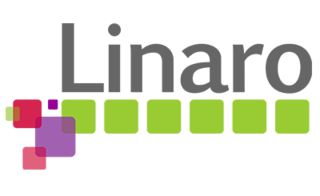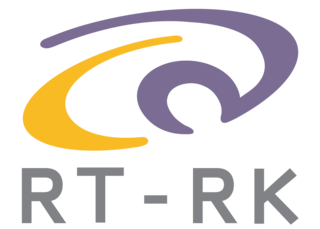Related Research Articles

In computing, a device driver is a computer program that operates or controls a particular type of device that is attached to a computer or automaton. A driver provides a software interface to hardware devices, enabling operating systems and other computer programs to access hardware functions without needing to know precise details about the hardware being used.

A Linux distribution is an operating system made from a software collection that includes the Linux kernel and often a package management system. Linux users usually obtain their operating system by downloading one of the Linux distributions, which are available for a wide variety of systems ranging from embedded devices and personal computers to powerful supercomputers.

MontaVista Software is a company that develops embedded Linux system software, development tools, and related software. Its products are made for other corporations developing embedded systems such as automotive electronics, communications equipment, mobile phones, and other electronic devices and infrastructure.
Wind River Systems, also known as Wind River, is an Alameda, California–based company, subsidiary of Aptiv PLC. The company develops embedded system and cloud software consisting of real-time operating systems software, industry-specific software, simulation technology, development tools and middleware.
Computer operating systems based on the Linux kernel are used in embedded systems such as consumer electronics, in-vehicle infotainment (IVI), networking equipment, machine control, industrial automation, navigation equipment, spacecraft flight software, and medical instruments in general.
Lineo was a thin client and embedded systems company spun out of Caldera Thin Clients by 20 July 1999.

OpenEmbedded is a build automation framework and cross-compile environment used to create Linux distributions for embedded devices. The OpenEmbedded framework is developed by the OpenEmbedded community, which was formally established in 2003. OpenEmbedded is the recommended build system of the Yocto Project, which is a Linux Foundation workgroup that assists commercial companies in the development of Linux-based systems for embedded products.

SageTV Media Center, now open source, was a proprietary, commercial DVR and HTPC software for Mac OS X, Windows and Linux. It requires that the host computer have a hardware-based TV tuner card. The SageTV software has an integrated Electronic Programming Guide (EPG) that is updated via the Internet. The program provides a television interface for DVR, music, and photos on Windows and Linux. SageTV Media Center typically records in standard MPEG2, making it possible to transfer recordings to laptops or other devices. It also has a built-in conversion feature to transcode files into other formats compatible with iPod, PSP, cell phones and other portable devices.
Communications servers are open, standards-based computing systems that operate as a carrier-grade common platform for a wide range of communications applications and allow equipment providers to add value at many levels of the system architecture.

The SheevaPlug is a "plug computer" designed to allow standard computing features in as small a space as possible. It was a small embedded Linux ARM computer without a display which can be considered an early predecessor to the subsequent Raspberry Pi.

Linaro is an engineering organization that works on free and open-source software such as the Linux kernel, the GNU Compiler Collection (GCC), QEMU, power management, graphics and multimedia interfaces for the ARM family of instruction sets and implementations thereof as well as for the Heterogeneous System Architecture (HSA). The company provides a collaborative engineering forum for companies to share engineering resources and funding to solve common problems on ARM software. In addition to Linaro's collaborative engineering forum, Linaro also works with companies on a one-to-one basis through its Services division.
OpenWrt is an open-source project for embedded operating systems based on Linux, primarily used on embedded devices to route network traffic. The main components are Linux, util-linux, musl, and BusyBox. All components have been optimized to be small enough to fit into the limited storage and memory available in home routers.

The Android Debug Bridge is a programming tool used for the debugging of Android-based devices. The daemon on the Android device connects with the server on the host PC over USB or TCP, which connects to the client that is used by the end-user over TCP. Made available as open-source software under the Apache License by Google since 2007, features include a shell and the possibility to make backups. The adb software is compatible with Windows, Linux and macOS. It has been misused by botnets and other malware, for which mitigations were developed such as RSA authentication and device whitelisting.

RT-RK is a Serbian R&D company and national research institute that delivers development services and own products in the arena of real time embedded systems, with focus on consumer electronics and automotive industry. Headquartered in Novi Sad, with offices in Belgrade, Banja Luka and Osijek (Croatia) with over 550 engineers, RT-RK is one of the biggest development houses in Southeast Europe.

The Yocto Project is a Linux Foundation collaborative open source project whose goal is to produce tools and processes that enable the creation of Linux distributions for embedded and IoT software that are independent of the underlying architecture of the embedded hardware. The project was announced by the Linux Foundation in 2010 and launched in March, 2011, in collaboration with 22 organizations, including OpenEmbedded.

Buildroot is a set of Makefiles and patches that simplifies and automates the process of building a complete and bootable Linux environment for an embedded system, while using cross-compilation to allow building for multiple target platforms on a single Linux-based development system. Buildroot can automatically build the required cross-compilation toolchain, create a root file system, compile a Linux kernel image, and generate a boot loader for the targeted embedded system, or it can perform any independent combination of these steps. For example, an already installed cross-compilation toolchain can be used independently, while Buildroot only creates the root file system.

Parrot OS is a Linux distribution based on Debian with a focus on security, privacy, and development.

Bootloader unlocking is the process of disabling the bootloader security that makes secure boot possible. It can make advanced customizations possible, such as installing a custom firmware. On smartphones this can be a custom Android distribution or another mobile operating system. Some bootloaders are not locked at all, others can be unlocked using a standard command, others need assistance from the manufacturer. Some do not include an unlocking method and can only be unlocked through a software exploit.
References
- 1 2 "About Timesys". Company web site. Archived from the original on December 31, 2016. Retrieved October 4, 2021.
- ↑ "Timesys Management Team" . Retrieved 16 August 2015.
- ↑ "Supported Processor Families" . Retrieved 16 August 2015.
- ↑ "Lynx Software Technologies Announces Acquisition of Timesys Corporation". Business Wire. Retrieved 2023-12-21.
- ↑ "TimeSys announces availability of Linux/RT 1.0". Archived from the original on 2012-09-09.
- ↑ "TimeSys issues position statement on MontaVista real-time". Archived from the original on 2013-01-28.
- ↑ "TimeSys joins OSDL with focus on Carrier Grade Linux". Archived from the original on 2012-09-10.
- ↑ "TIMESYS FIRST TO REGISTER CARRIER GRADE LINUX DISTRIBUTION" . Retrieved 16 August 2015.
- ↑ "TimeSys drops distro model, embraces "roll-your-own" embedded Linux services". Archived from the original on 2012-09-04.
- ↑ "Timesys LinuxLink: Build Embedded Linux Based Devices — Quickly" . Retrieved 16 August 2015.
- ↑ "Timesys Factory(TM) — 'No Compromise' Custom Platform Builder" . Retrieved 16 August 2015.
- ↑ "Timesys Vigiles Brings Real-time Vulnerability Monitoring, Targeted Risk Mitigation, Advanced Patch Notification to Embedded System Development". Timesys Embedded Linux. 2019-06-11. Retrieved 2021-08-10.